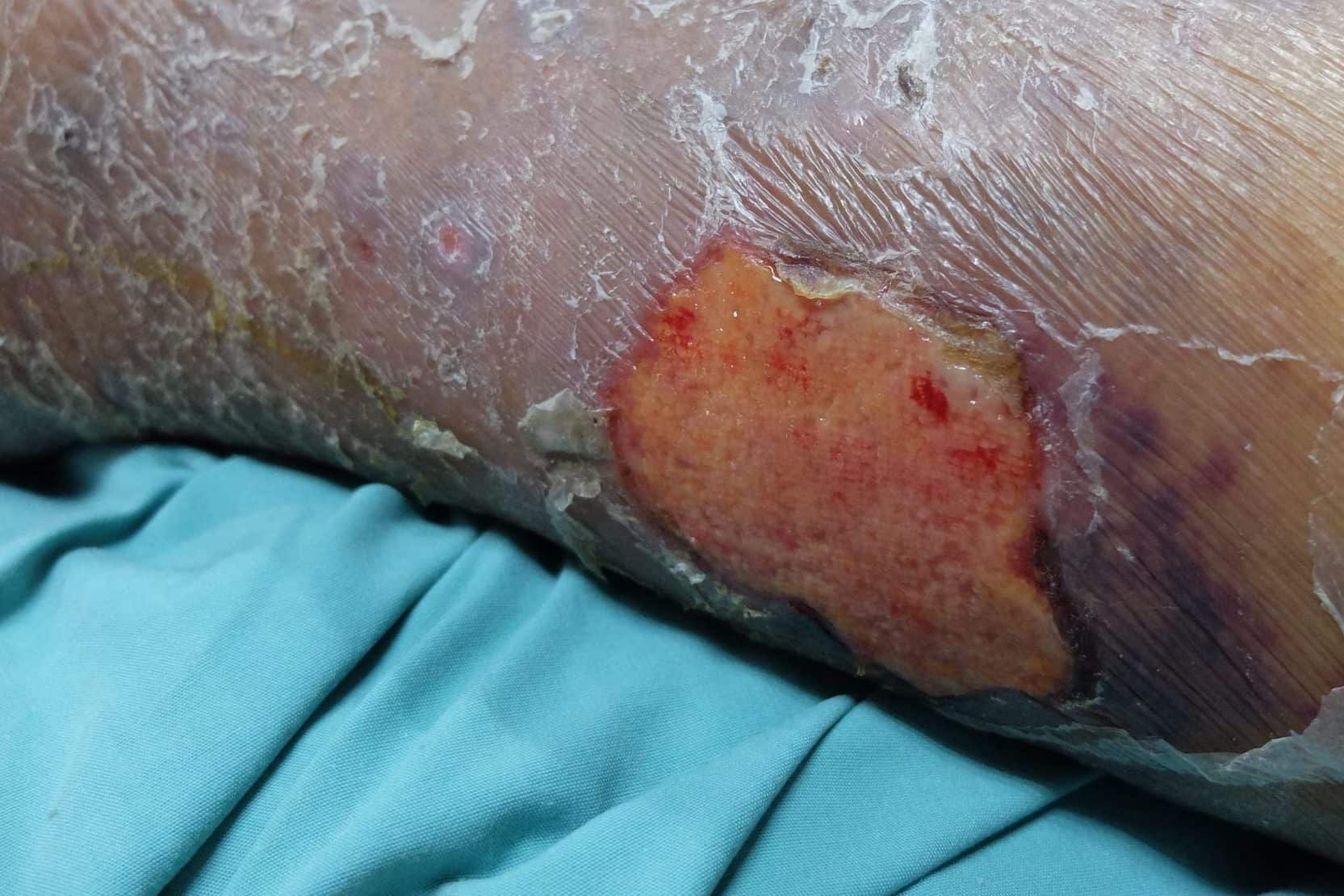Varicose Ulcers – Meaning, Causes & Treatment – Auckland, NZ
Varicose ulcers – also called venous ulcers – are leg ulcers caused by varicose veins and can take weeks or months to heal if the varicose vein is left untreated.
Here we explain what causes varicose ulcers, varicose ulcer treatment, and we provide varicose ulcer pictures including before and after treatment photos.

What Causes Varicose Ulcers
Varicose ulcers are a major problem for some varicose vein sufferers. Varicose veins themselves are caused by venous insufficiency – a condition where the veins in the leg fail to pump blood towards the heart. Instead the blood flows into the lower leg where it collects and causes the veins to swell.
A varicose ulcer may occur if the leg suffers a minor injury like a knock or a scratch, putting extra pressure on the lower leg veins and causing fluid to leak out of the swollen veins into the surrounding tissue. This can erode the tissue and cause an ulcer to form – usually on the inside of the lower leg above the ankle.
The initial symptoms of a venous ulcer are dark red or purple areas of skin on the lower leg. Venous ulcers are also associated with varicose eczema, which is a dry, itchy area of skin above a varicose vein. You may also experience heavy aching lower legs or swollen ankles.
Without treatment, the venous leg ulcer may become painful, weepy and prone to infection.
There are many factors that contribute to venous insufficiency and varicose veins. You are more likely to suffer from these conditions if you have an immediate family member who has them, are aged over 60, are overweight or obese, if you have a history of Deep Vein Thrombosis (DVT), or if you work in a job that requires you to spend a lot of time on your feet. You can read more about what causes varicose veins here.
Lifestyle changes, such as healthy eating, regular exercise and maintaining a healthy weight can reduce your chances of developing a venous leg ulcer.
Varicose Ulcers Treatment
A varicose leg ulcer can require constant dressings and cause huge inconvenience for patients and enormous cost for the health system. It is important that the cause of the venous ulcer is treated, namely the abnormal varicose vein.
The best treatment for venous ulcers is therefore Radio Frequency Ablation (RFA) or Ultrasound Guided Sclerotherapy (UGS) treatment of the varicose veins.
These procedures will improve venous circulation, draining skin waste products and allowing the venous leg ulcer to heal.
Management of the leg ulcer before treatment consists of wearing compression stockings to aid circulation, and regular dressings to manage the wound. However, it is best to start treatment of the varicose veins as soon as possible. Generally the leg ulcers will heal within a few weeks of treating the varicose veins.
Varicose Ulcers Pictures

This venous leg ulcer had been present for months and would not heal despite frequent dressings by a district nurse. The picture on the right was taken two weeks after treatment at Palm Clinic in Auckland, NZ. The venous ulcer is significantly improved and will continue to heal over the coming weeks.
Varicose Ulcers Before & After Photo
You can view more varicose ulcers pictures of before and after treatment here.
